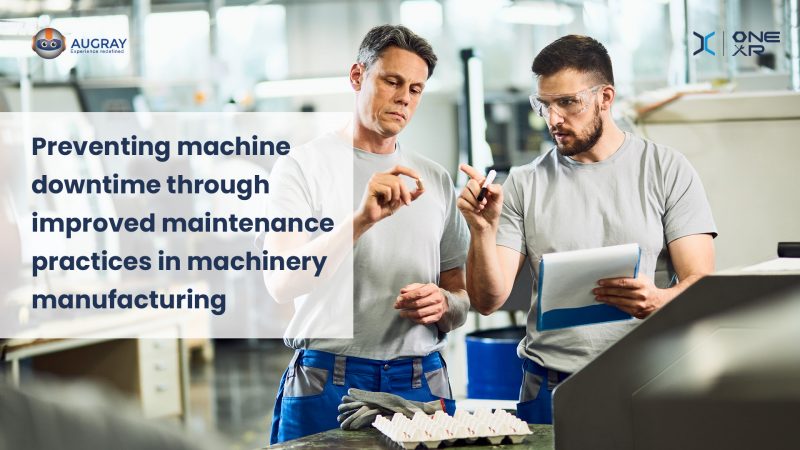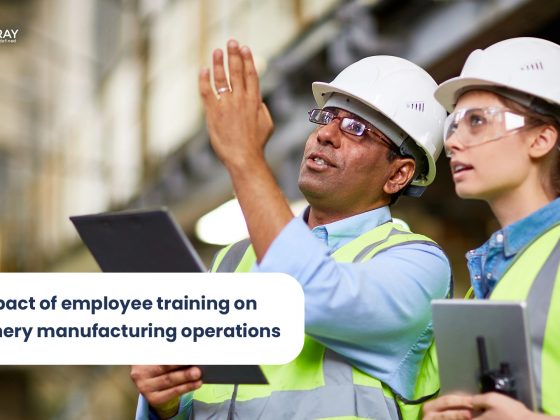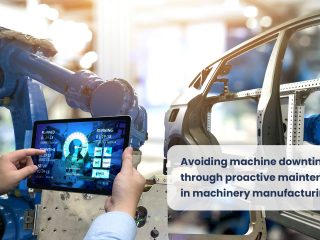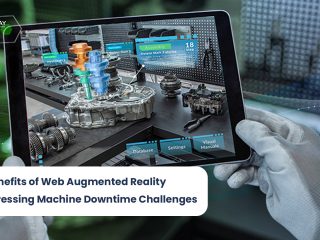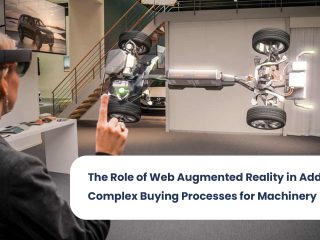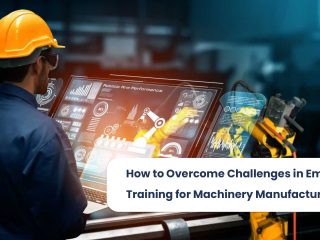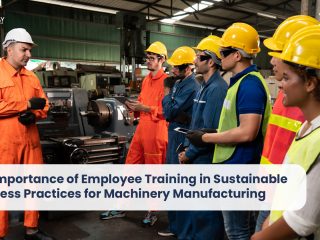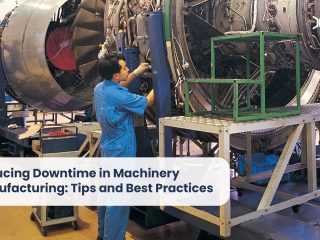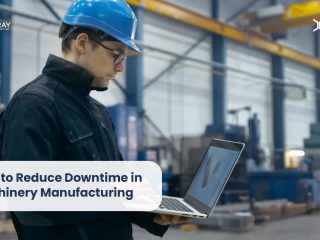Machine downtime is a significant concern in the machinery manufacturing industry as it leads to reduced productivity, increased costs, and customer dissatisfaction. One effective approach to minimize downtime is through improved maintenance practices.
With the emergence of extended reality (XR) technologies, such as virtual reality (VR) and augmented reality (AR), manufacturers can revolutionize their maintenance processes. This article explores how XR can prevent machine downtime by enhancing maintenance practices in machinery manufacturing. It highlights advantages and provides real-life examples for each category.
1. Real-time Equipment Monitoring and Predictive Maintenance :
Advantages:
- Early detection of equipment malfunctions or performance degradation.
- Proactive maintenance planning to prevent unexpected downtime.
Example:
A heavy machinery manufacturer installed XR-enabled sensors on critical components of their production equipment. These sensors continuously monitor performance metrics, such as temperature, vibration, and energy consumption.
By analyzing real-time data, the manufacturer can identify potential issues before they lead to machine failures. This enables proactive maintenance planning, scheduling repairs or component replacements at convenient times, thus minimizing unexpected downtime and optimizing production efficiency.
2. Remote Monitoring and Diagnostics :
Advantages:
- Access to real-time equipment information from remote locations.
- Reduced response time for troubleshooting and issue resolution.
Example:
An industrial equipment manufacturer implemented XR-based remote monitoring and diagnostics systems. Through AR-enabled smart glasses, field technicians can collaborate with off-site experts, sharing a live video feed of the equipment.
The experts can overlay digital instructions, annotations, or diagrams onto the technician’s view, guiding them through troubleshooting and repair processes. This remote support reduces travel time and costs while enabling quicker response times for issue resolution, effectively preventing prolonged machine downtime.
3. Interactive Digital Manuals and Guides :
Advantages:
- Access to detailed maintenance instructions and documentation.
- Improved accuracy and efficiency in performing maintenance tasks.
Example:
A global manufacturing company developed an XR platform that provides interactive digital manuals and guides for maintenance personnel. Technicians can access detailed instructions, 3D models, and step-by-step procedures overlaid onto the physical equipment using AR-enabled tablets.
This interactive guidance ensures accurate and efficient execution of maintenance tasks, reducing the risk of errors and minimizing downtime caused by incorrect or incomplete procedures.
4. Augmented Reality-based Training :
Advantages:
- Enhanced training effectiveness and retention.
- Improved knowledge transfer and skills development.
Example:
An automotive manufacturer implemented AR-based training programs for their maintenance technicians. Through AR headsets, technicians can practice complex maintenance procedures on virtual equipment replicas.
The system provides real-time feedback, highlighting correct actions and pointing out potential errors. This immersive training experience improves technicians’ understanding, proficiency, and confidence in performing maintenance tasks, leading to a reduced learning curve and more efficient maintenance practices, ultimately preventing machine downtime.
5. Visualized Equipment Performance and Analytics :
Advantages:
- Real-time visualization of equipment performance data.
- Enhanced decision-making for maintenance planning and optimization.
Example:
A power generation company integrated XR technologies to visualize equipment performance and analytics. Through VR simulations, operators and maintenance personnel can monitor real-time data, such as temperature, pressure, and energy consumption, in an immersive virtual environment.
This visualization allows for early identification of anomalies and abnormalities, enabling proactive maintenance interventions. Additionally, the data-driven insights facilitate informed decision-making for maintenance planning, optimizing schedules, and preventing unexpected machine downtime.
6. Streamlined Spare Parts Management :
Advantages:
- Improved accuracy in spare parts identification and ordering.
- Reduced downtime caused by unavailable or incorrect parts.
Example:
A machinery manufacturer implemented an XR-based spare parts management system. Through AR applications, technicians can scan equipment components and quickly access detailed information about the specific part, including its specifications, part numbers, and ordering details.
This streamlined process reduces errors in spare parts identification and ordering, ensuring accurate and timely replacements. As a result, machine downtime caused by unavailability or incorrect parts is minimized, allowing for uninterrupted production.
7. Enhanced Safety and Compliance Measures :
Advantages:
- Improved adherence to safety protocols and regulations.
- Reduced risk of accidents and equipment damage.
Example:
A chemical manufacturing plant utilized AR overlays to enhance safety and compliance measures. Maintenance technicians wear AR-enabled glasses that provide real-time visual cues and instructions, highlighting safety zones, cautionary signs, and required procedures during maintenance tasks.
These visual prompts ensure adherence to safety protocols and regulations, minimizing the risk of accidents and equipment damage. By promoting a safer working environment, the company can prevent unplanned downtime resulting from workplace incidents.
8. Collaborative Knowledge Sharing and Documentation :
Advantages:
- Efficient knowledge sharing and collaboration among maintenance teams.
- Enhanced documentation and accessibility of maintenance records.
Example:
A global machinery manufacturing company implemented an XR-based collaboration platform for maintenance teams. Using AR and VR technologies, technicians across different locations can virtually connect and collaborate on maintenance projects.
They can share live video feeds, annotated instructions, and real-time data visualizations, facilitating effective knowledge transfer and troubleshooting. Additionally, the platform allows for the creation and storage of digital maintenance records, ensuring easy accessibility and accurate documentation of past maintenance activities. This collaborative knowledge sharing and comprehensive documentation help prevent machine downtime by enabling efficient problem-solving and reducing the risk of repetitive errors.
Conclusion:
In machinery manufacturing, preventing machine downtime is crucial for maintaining productivity, efficiency, and profitability. By embracing extended reality (XR) technologies, manufacturers can significantly improve their maintenance practices and reduce the risk of unexpected breakdowns.
Real-time equipment monitoring, remote diagnostics, interactive digital manuals, AR-based training, visualized performance analytics, streamlined spare parts management, enhanced safety measures, and collaborative knowledge sharing are just some of the advantages of integrating XR into maintenance operations.
Real-life examples demonstrate the effectiveness of XR in preventing machine downtime across various industries. As XR technologies continue to evolve and become more accessible, manufacturers have a powerful tool at their disposal to optimize maintenance practices, extend machine lifespans, and ensure uninterrupted production, ultimately leading to increased profitability and customer satisfaction.
